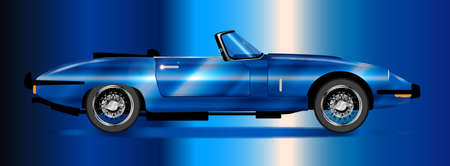Understanding Night Vision Assist
As American roads become busier and driving conditions more complex, safety innovations are essential for keeping drivers, passengers, and pedestrians safe—especially after dark. Night Vision Assist is a cutting-edge technology that leverages infrared sensors to extend a driver’s ability to see beyond the reach of standard headlights. This system detects heat signatures from people, animals, or obstacles on or near the road and projects this information onto a screen inside the vehicle, offering an extra layer of awareness in low-light environments. By understanding how Night Vision Assist works and its growing role in modern American driving culture, we can appreciate how technology not only makes our roads safer but also encourages responsible mobility practices rooted in sustainability and care for our communities.
2. The Science Behind Infrared Technology
Infrared technology, often called IR, is at the heart of modern night vision assist systems in vehicles. Unlike visible light, which our eyes rely on, infrared sensors detect heat signatures emitted by objects, animals, and people. This means that even in complete darkness or challenging weather conditions—like fog or heavy rain—infrared cameras can “see” what regular headlights miss. By translating these thermal signals into visual images displayed on a dashboard screen or heads-up display, drivers gain an extra layer of awareness after sundown.
How Infrared Detection Works
All living things and many objects naturally emit infrared radiation as heat. Night vision assist uses specialized cameras to pick up these signals and convert them into a readable image. The process works regardless of ambient lighting because it’s based on temperature differences, not reflected light. Here’s a quick comparison:
| Technology | Detection Basis | Performance at Night |
|---|---|---|
| Traditional Headlights | Visible Light Reflection | Limited to illuminated areas |
| Infrared Night Vision Assist | Heat Signatures (Thermal Radiation) | Detects beyond headlight range and in total darkness |
Why Infrared Is a Game Changer for Nighttime Visibility
The main advantage of infrared technology is its ability to spot hazards long before they enter the beam of your headlights. Whether its a deer lurking at the roadside or a pedestrian crossing unexpectedly, night vision assist gives drivers critical seconds to react safely. In the U.S., where rural roads and wildlife encounters are common, this tech offers peace of mind and helps reduce nighttime accidents.
Sustainability Meets Safety
By helping drivers avoid sudden stops and collisions, infrared night vision assist also supports sustainability goals by reducing unnecessary repairs, lowering insurance claims, and cutting down on wasted resources—all while protecting lives and keeping communities safer after dark.

3. Enhancing Road Safety After Dark
Driving at night presents unique challenges that can compromise safety, from limited visibility to unexpected hazards appearing on the road. This is where Night Vision Assist steps in as a game changer for American drivers. By leveraging advanced infrared technology, Night Vision Assist enables your vehicle to detect pedestrians, animals, and obstacles far beyond the reach of traditional headlights. This technology scans the road ahead for sources of heat, such as a jogger crossing the street or a deer lurking near the shoulder, and displays these critical alerts directly on your dashboard or heads-up display. Not only does this give you extra reaction time, but it also reduces the risk of accidents caused by unseen dangers. Whether youre navigating suburban neighborhoods or rural highways, Night Vision Assist acts as a vigilant co-pilot—helping you drive with greater confidence and care. In a country where diverse wildlife and busy communities intersect with our roads, this technology is more than just a convenience; its an essential step toward safer, more sustainable mobility for everyone.
4. Sustainable Driving and Green Mobility
One of the often-overlooked benefits of Night Vision Assist, powered by advanced infrared technology, is its positive impact on sustainable driving and green mobility in the United States. By enhancing visibility during nighttime driving, this technology directly contributes to reducing accident rates, which in turn supports broader sustainability goals. Fewer accidents mean less emergency response traffic, reduced congestion, and decreased need for vehicle repairs or replacements—all factors that help lower the carbon footprint associated with transportation.
Reducing Accidents for a Greener Tomorrow
Accident prevention is at the heart of sustainable transportation initiatives. Night Vision Assist enables drivers to detect pedestrians, cyclists, and wildlife far beyond the reach of standard headlights. This proactive alert system helps prevent collisions that would otherwise require resource-intensive interventions. The following table illustrates how improved night driving safety translates into environmental benefits:
| Benefit | Environmental Impact |
|---|---|
| Fewer Traffic Accidents | Reduced emergency response & medical services emissions |
| Decreased Vehicle Damage | Less manufacturing energy needed for repairs/replacements |
| Smoother Traffic Flow | Lower congestion and idling emissions |
Supporting Green Transportation Initiatives
The U.S. is committed to advancing green mobility through policies that encourage safer, cleaner transportation options. Night Vision Assist fits perfectly within this framework by making night travel safer for all road users—including those who walk or bike—encouraging more Americans to choose eco-friendly commuting methods after dark. With fewer accidents at night, city planners can confidently expand shared mobility services like bike shares and e-scooters, further supporting urban sustainability efforts.
Toward a Greener Future with Smart Technologies
As America moves toward an electrified, low-emission future, every innovation counts. Night Vision Assist is more than just a safety upgrade; it’s a step toward integrating smart technology into our everyday lives to build greener communities. By making roads safer after sunset, we create opportunities for sustainable growth and healthier environments across the nation.
5. Integration with American Car Culture
Night Vision Assist technology is steadily weaving itself into the fabric of American car culture, a landscape known for its passion for innovation and safety on the road. Leading automakers such as Cadillac, Ford, and Tesla are pioneering the integration of infrared night vision systems in their latest vehicle models, underscoring a commitment to both driver safety and advanced technology. These brands recognize that American consumers value not just performance and comfort, but also intelligent safety features that offer peace of mind during nighttime driving or in challenging weather conditions.
Consumer attitudes toward Night Vision Assist reflect a growing openness to adopting technologies that can make driving safer and more intuitive. While early adopters—often tech enthusiasts or families prioritizing security—have driven initial interest, mainstream acceptance is on the rise as awareness spreads about the tangible benefits this technology provides. Features such as pedestrian detection, animal recognition, and enhanced visualization beyond the reach of standard headlights resonate strongly with Americans who frequently drive long distances or live in suburban and rural areas where visibility is critical.
Automotive marketing campaigns now increasingly highlight Night Vision Assist as a premium feature that aligns with the spirit of American adventure and freedom on the open road. There is also an emerging trend among eco-conscious drivers who see this technology as part of a holistic approach to responsible driving, reducing accident risks and supporting sustainable communities. As infrastructure evolves and U.S. automakers continue to innovate, Night Vision Assist is set to become not only a symbol of cutting-edge automotive engineering but also an integral part of Americas evolving relationship with safe and smart mobility.
6. Future Trends in Nighttime Driving Tech
As we look ahead, the future of nighttime driving is set to be transformed by rapid advancements in infrared and related technologies. Smart night vision assist systems are becoming more sophisticated, integrating artificial intelligence (AI) and machine learning to better interpret real-time data and anticipate potential hazards on the road. These innovations will not only boost driver confidence but also reduce accident rates during low-light conditions.
Automakers are already exploring ways to fuse infrared cameras with other sensor systems—like LiDAR, radar, and ultrasonic detectors—to create a comprehensive 360-degree safety net. This interconnected approach enables vehicles to detect pedestrians, animals, or objects with greater precision, regardless of lighting or weather conditions. In the near future, expect to see this technology seamlessly integrated into mainstream vehicles, making advanced safety features accessible for American families everywhere.
Moreover, as electric vehicles (EVs) and hybrid cars gain traction across the United States, energy-efficient infrared solutions are being designed to minimize power consumption while maximizing performance. This aligns perfectly with America’s growing commitment to green transportation and sustainability goals. By leveraging eco-friendly materials and smart power management, these next-generation systems support safer journeys without compromising our planet’s well-being.
Ultimately, the convergence of AI-powered software, robust hardware improvements, and sustainable design will pave the way for smarter, safer, and more eco-conscious nighttime driving experiences for everyone on the road.


